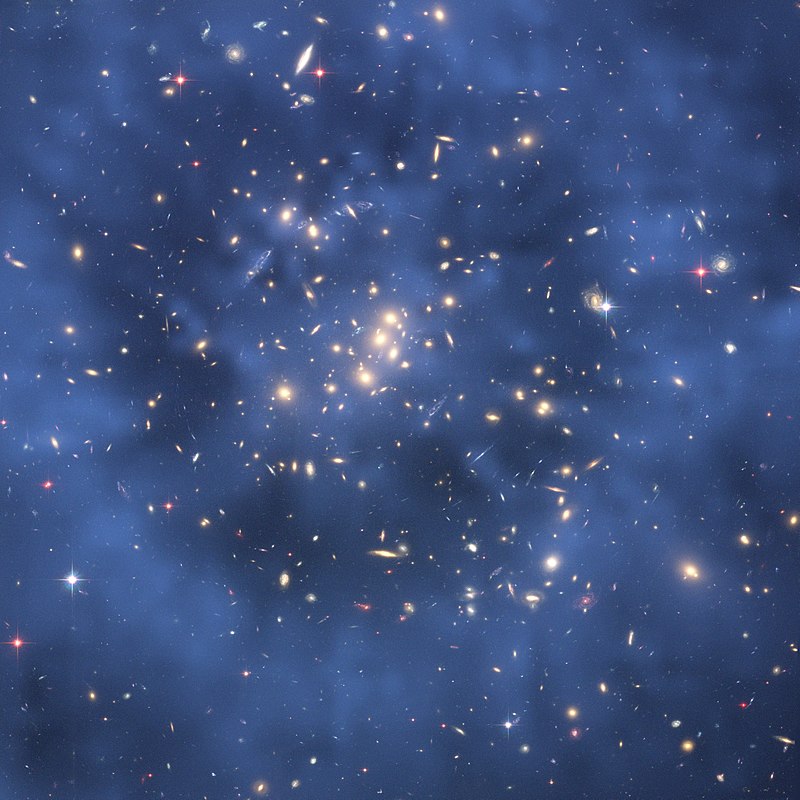
From Nancy Atkinson at LiveScience:
Now, researchers have produced what they say is the first composite image of a dark matter filament that connects galaxies together.
…
In their paper, they explained that in order to study the weak lensing signal of the dark matter filaments, they required two sets of data: a catalog of galaxy cluster pairs that were lensed, and a catalog of background source galaxies with accurate distance measurements.
They combined lensing data from a multi-year sky survey at the Canada-France-Hawaii Telescope with information from the Sloan Digital Sky Survey that mapped luminous red galaxies (LRGs), which are massive, distant, and very old galaxies.
…
Hudson and Epps combined or “stacked” more than 23,000 galaxy pairs, all located about 4.5 billion light-years away. This allowed them to create a composite image or map that shows the presence of dark matter between galaxies. Hudson told Seeker that the filament in their “image” is the average of all 23,000 pairs. More.
Why wouldn’t this be bigger news?
Our physics colour commentator Rob Sheldon, who thinks dark matter definitely exists, writes to say,
… this “first image” is a composite of 23,000 different galaxy pairs, where they would scale and rotate each of the 23,000 images before overlaying them. So it isn’t exactly an image of anything in particular, and could very easily be an image of the scaling algorithm. Suppose every image was of a circular galaxy, but when they scaled the images it became elliptical, so the “bridge” is just the infrequent appearance of two circular galaxies that nearly touch, now scaled to ellipses and stretched to fit the superposition.
This happens all the time in these statistical surveys, and even happened to me in my PhD thesis. All the exciting “bridge” data in my 3-week superposition data set came from a single day, an observation which I tried to bury on page 100. I still find it miraculous that no one called me out on it, and I got my PhD anyway. But then I didn’t exactly call a press conference to advertise it either.
I don’t know whether they actually believe their massaged data set shows a bridge, or whether they just want everyone else to believe it and reap the fame. But in either case, it shows how far astronomy has fallen. I think I will propose to superpose 1,000,000,000 stellar images to show that for the first time I found a star that wasn’t round.
Nice try though.
See also: Dark matter: What if gravity just doesn’t stick to the rules?
Follow UD News at Twitter!